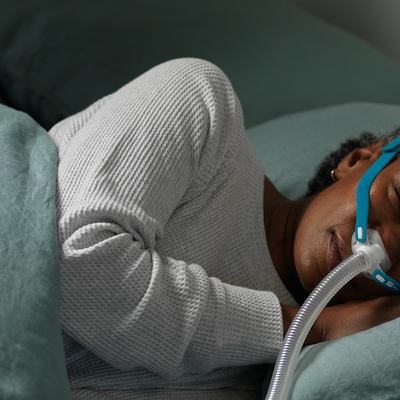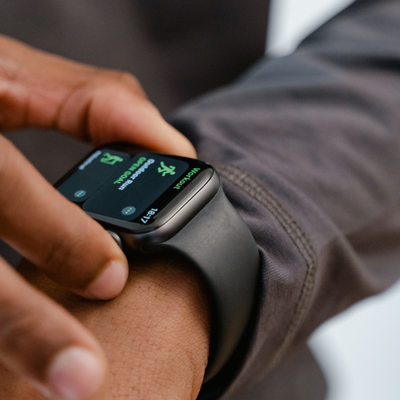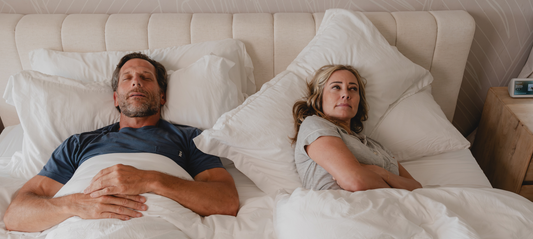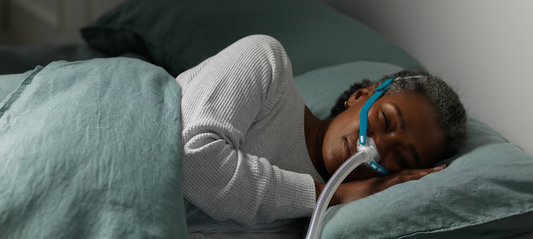Scaling the heights of Mount Kilimanjaro is no ordinary feat. It's a journey that demands courage, resilience, and meticulous preparation. As an adventurer and Lofta customer, Jim Rowson was drawn to the allure of reaching the roof of Africa. But there was a unique challenge awaiting him on this expedition: sleep apnea.
ResMed rates the ResMed AirMini™ as usable at a max elevation of about 8,500 feet. So, Jim was faced with a daunting decision: could he bring his CPAP with him? Would it withstand the rigors of high-altitude trekking? More importantly, could it make the difference between success and failure on Africa's highest peak?
Jim was kind enough to share his journey with us:
When did you complete your climb of Mt. Kilimanjaro?
It was September 2023 when I climbed Mt Kilimanjaro. The entire trek was 8 days, 7 nights of CPAP. After reaching the summit there is about 14,000 feet of descent with one overnight.

(pictured: the camping set up at high altitude)
Was this a bucket-list climb? And what others are on the list?
It’s funny. I had never considered climbing Mt Kilimanjaro until I had been to Tanzania for a game safari and saw the Mountain. I am a regular hiker in Washington state and was on a local hike with others when Mt. Kilimanjaro came up.
One hiker mentioned that he knew a guide for Kilimanjaro. That began the planning for what eventually resulted in eight local hikers heading to Tanzania as a group.

(pictured: the group setting out)
Why did you feel it was necessary to bring your CPAP on the climb? How did Lofta help you prepare?
I have been a CPAP user for about 25 years. To me I have been on CPAP so long, no CPAP means no go.
It was only a question as to how. That is where Lofta, with their website, and customer service played a role. It was time for a new portable machine and the ResMed AirMini™ was soon making the climb with me.
While I was advised the maximum altitude of the AirMini™ is 8,500 feet, I took the risk that it would perform at greater elevation. All our nights were above 8,500 ft. with several above 13,000 ft. I used it every night, all night, though a few of those high elevation nights, the CPAP seemed a bit “different”. It did survive and I use it today when traveling.

(pictured: high altitude warning signs for climbers)

(pictured: camping, Kilimanjaro style)
What was the most memorable part of the journey?
Reaching Stella Point, 18,885 feet was perhaps the most memorable. We reached it at about 6:20 AM after climbing with headlamps 6 difficult hours from 16,000 ft. I was unexpectedly emotional, looking into the caldera, feeling the elevation, and sensing the successful summit at 19,341 Ft. Months of anticipation and training paid off.

(pictured: Jim at Stella Point)

(pictured: Jim reaching the summit)
Travel Tips from Lofta: Venturing Out with a CPAP Machine
Embarking on an adventure like climbing Mount Kilimanjaro with a CPAP machine requires extra planning and the right gear. Here are essential tips from Lofta for anyone considering taking their CPAP therapy on the road—or up a mountain!
Choosing the Right CPAP Machine
- Compact and Durable: For travel, especially to remote or rugged locations, choose a compact and durable machine like the ResMed AirMini. Its small size makes it ideal for packing in tight spaces.
- Altitude Adjustment: Check the altitude limits of your CPAP device. The AirMini, for example, is rated for use up to 8,500 feet, but as Jim’s experience shows, it may perform differently at higher elevations. Always consult with your provider about your specific travel plans and the capabilities of your CPAP machine.
Power Solutions
- Battery Packs: Ensure you have a reliable power source. Battery packs are essential for areas without electrical outlets. Look for CPAP-specific battery kits that can last several nights on a single charge.
- Solar Chargers: For longer treks, consider a portable solar charger to help keep your battery pack charged without access to traditional power sources.
Travel-Friendly CPAP Accessories
- Masks and Tubing: Opt for masks that are lightweight and less bulky. Masks like the ResMed AirFit™ P10 for AirMini are designed to be travel-friendly, offering comfort without taking up much space.
- Waterproof and Protective Cases: Protect your CPAP machine from moisture and physical damage with a waterproof case, especially important in outdoor environments where weather conditions can be unpredictable.
Understanding Device Restrictions and Limitations
- Water and Dust Sensitivity: While CPAP machines are durable, they are not typically waterproof or dustproof. Take precautions to protect your device from water and dust, which can be particularly challenging in outdoor settings.
- Device Care at High Altitudes: At high altitudes, the air density is lower, which can affect the performance of your CPAP machine. Be aware of any operational quirks under these conditions and know the signs that indicate your device may not be functioning optimally.
Additional Considerations
- Travel Insurance: Consider investing in travel insurance that covers medical equipment. This can provide peace of mind in case of damage or loss during your trip.
- Local Regulations and Power Standards: Research the local regulations regarding medical devices in your destination and the standard power outlets and voltage to ensure you can safely and legally use your CPAP machine abroad.
By preparing adequately, you can ensure that your CPAP therapy complements your adventure rather than complicates it. Lofta is here to help with advice, equipment, and support to make your travel as smooth and restful as possible. Remember, with the right preparation, the sky—or the summit—is the limit!
Do you have an AirMini™ Adventure to tell?
Let us know! Send in your story to marketing@lofta.com
Written by Scott Baylon | April 29, 2024


















